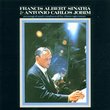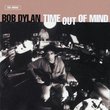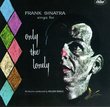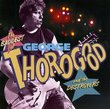| All Artists: Frank Sinatra Title: Strangers in the Night Members Wishing: 1 Total Copies: 0 Label: Reprise Records Release Date: 10/25/1990 Genres: Jazz, Pop, Rock, Broadway & Vocalists Styles: Traditional Jazz & Ragtime, Vocal Jazz, Easy Listening, Oldies, Vocal Pop, Classic Vocalists, Traditional Vocal Pop Number of Discs: 1 SwapaCD Credits: 1 UPC: 075992703420 |
Search - Frank Sinatra :: Strangers in the Night
 | Frank Sinatra Strangers in the Night Genres: Jazz, Pop, Rock, Broadway & Vocalists
Although Frank Sinatra had often expressed dislike for the smash title hit on this 1966 album, it is best known for providing some of the last tracks that the singer and his legendary arranger, Nelson Riddle, produced toge... more » |
Larger Image |
CD DetailsSynopsis
Amazon.com Although Frank Sinatra had often expressed dislike for the smash title hit on this 1966 album, it is best known for providing some of the last tracks that the singer and his legendary arranger, Nelson Riddle, produced together. Some memorable tracks include "On a Clear Day You Can See Forever," "The Most Beautiful Girl in the World," and "You're Driving Me Crazy." The CD is a straight, no-frills reissue of the original vinyl release. --Stephen M.H. Braitman Similar CDs
Similarly Requested CDs
|
CD ReviewsUnderrated, but still great: Sinatra in the late 60s Tim Withee | Los Angeles, CA | 10/11/2000 (5 out of 5 stars) "Maybe The Chairman was beyond his classic period, but he still had the chops that made him "the greatest saloon singer" of all time. I bought this album in the early 70s, and still have the side, in perfect condition. A friend of mine with a top-end stereo turned me on to the album. As we listened, the tune that grabbed me right off the bat was "All or Nothing at All," a 40s classic, updated and rearranged by Nelson Riddle. With the stereo cranked, the power of Sinatra's voice, backed by the amazing Riddle Orchestra, was unbelievable. You got the effect of the music just bursting out of the speakers! At last, I fully understood the meaning of "swing!" The album is a fine testament to the staying power of a great singer, artist and musician. Songs as his pop hit, "Strangers in the Night," the gorgeous "Summer Wind," "On a Clear Day," and "The Most Beautiful Girl in the World," to me are the highlights, and get superb treatment from the mature artist that Sinatra was at the time. His rich, mellow voice and his phrasing are perfect -- and has there ever been a singer more credible with a song than Sinatra? He paints pictures in your mind. "Summer Wind," still does it to me after all these years. Finally, the Nelson Riddle Orchestra is the perfect complement to the Man and his Music. Sure, this album might not be recognized as one of the alltime classic works of Sinatra, but that's okay. It's still a gem of an album, and worth 5 stars." Groovy, baby Tim Withee | 01/04/1999 (4 out of 5 stars) "This is an oddly satisfying album, and arose from odd circumstances. Sinatra had a hit on his hands (the title track), and was due to go into the studio with Riddle. As the hit was uptempo, Nelson went that way and came up with a fresh wrinkle -- the electric jazz organ. This may sound cheesy, as in "Sinatra sings the Beach Boys," but they pulled it off, the singer playing real loose with some of the lyrics (even forgetting the words on "You're Driving Me Crazy," a way of showing he found the material very light). The best track is "All or Nothing At All," with the organ whipping up a frenzy not even matched on the lilting version of Johnny Mercer's "Summer Wind" we all know so well.As always, Riddle had the creative juices to take an idea just one step further. Great fun. It has the feel of the Austin Powers soundtrack about it, and I'm sure the Man of Mystery would agree with my review title.Side note: As "Sinatra '67", this was Number One in Europe for weeks and weeks, and it knocked The Beatles "Rubber Soul" off the top of the charts, just as the single knocked them down a peg here in the States. The old singer must have gotten a kick out of that." Classic Sinatra Tim Withee | 04/15/2001 (5 out of 5 stars) "By 1966, when he recorded this album, Sinatra's voice had roughened, but he was singing with a lot more kick than he had ten years earlier, and he was still the best singer in the world. Other than the title track this is all uptempo stuff, and with Nelson Riddle's arrangements featuring a swinging electronic organ, this is one of his most exciting albums. He transformed contemporary songs like "Call Me" into the Sinatra ouevre, while at the same time updating older ballads like "All or Nothing At All" into a swinging blues piece. My favorite track is the "Summer Wind" in which Sinatra uses his roughened voice to great effect. He's the only singer who could ever swing and sound like he was about to cry at the same time "The autumn wind and the winter wind/They have come and gone." He sings it as if he's trying to hold despair off by punching out the lyrics. If there's such thing as genius in pop music, this is it. And if you're just starting to get into Sinatra and want to move beyond the compilation albums, this is the way to go."
|

 Track Listings (10) - Disc #1
Track Listings (10) - Disc #1
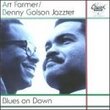
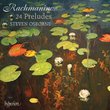
![Rave-o-lution [Single-CD]](/images/no_cover/m.png?v=430e6b0a)



